Customer service staff in the Ridgefield Regional Office are available for walk-in service 9 a.m. to 4 p.m. Monday through Friday excluding legal holidays.
The Cowlitz Wildlife Area field office in Morton is open to the public Monday through Friday 8 a.m. to 12 p.m., excluding legal holidays. This office now sells licenses and Discover Passes, and supports pelt sealing.
Fishing tips and news
New to fishing in Washington? Check out our Fish Washington blog post for a guide on how to get started.
2024-25 Sport Fishing Rules
The latest fishing regulations go into effect July 1. The 2024-25 Washington Sport Fishing Rules pamphlet is now available online and will soon be at hundreds of license dealers around the state.
Be sure to buy your 2024-25 recreational fishing license before heading out. Licenses are available on WDFW’s licensing website, at WDFW regional offices, or through license vendors.
Current fishing regulations and emergency Fishing Rule Changes are also available online at wdfw.wa.gov/fishing/regulations.
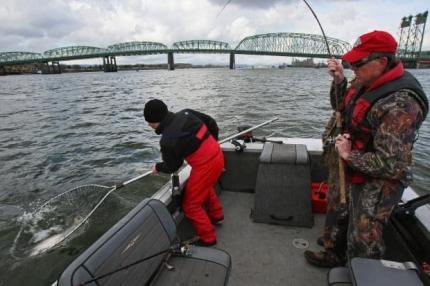
Lower Columbia River salmon and steelhead
Fishing success in the lower Columbia River has been on the upswing in recent weeks with favorable fishing conditions and a strong run summer steelhead. Late June and early July is a great time to target summer steelhead with most of the run returning in this timeframe. To date, over 9,000 summer steelhead have been counted at Bonneville Dam, including over 4,000 wild fish.
Hatchery steelhead is allowed in the daily salmonid bag limit through July 31 for waters downstream of Highway 395 Bridge in Pasco. Summer Chinook retention below Bonneville Dam closed June 19, with the stretch of river above Bonneville to Highway 395 Bridge in Pasco closing to summer Chinook effective July 1.
Sockeye fishing in the Columbia River downstream of the Highway 395 Bridge in Pasco is closed. The Columbia River sockeye run includes Snake River sockeye, which are listed under the federal Endangered Species Act and must not be overharvested.
Anglers should review the Washington Sport Fishing Rules pamphlet for the water they plan to fish, as well as check the emergency rule changes before heading out. Regulations may be modified in-season as returns materialize.
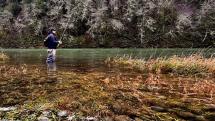
Fishing the tributaries
The Kalama, Lewis, and Cowlitz rivers are open for hatchery Chinook and hatchery steelhead retention through July 31 in most areas. Harvest rules were modified in the Cowlitz River to allow adipose clipped Chinook retention with broodstock goals expected to be met.
Above Bonneville Dam, Drano Lake and Wind River remain open to hatchery Chinook and hatchery steelhead retention under permanent rules until further notice.
For recent catch reports, see our Southwest Washington fishing reports webpage.
WDFW to phase out recreational fishing and shellfishing hotlines
For several decades, WDFW provided phone hotlines where people could listen to prerecorded messages about fishing seasons and rule changes. In the years since we established the hotlines, WDFW launched several new options to find accurate, up-to-date fishing information. In summer 2024, we are phasing out prerecorded phone hotlines for recreational fishing and shellfishing. There are no changes to the commercial hotlines.
There are many places to find WDFW fishing regulations and information. We encourage anglers who used the prerecorded hotlines to take advantage of one of the web, mobile app, or other customer service phone options we offer. Visit our Fishing Hotlines page to see the full list of new options and find more information.
Trout and kokanee fishing in lakes and ponds
WDFW hatchery personnel were busy planting catchable trout in southwest Washington lakes in June. Lakes stocked with rainbow trout in recent weeks include:
- Battle Ground Lake in Clark County
- Horseshoe Lake, Kress Lake, and Lake Sacajewea in Cowlitz County
- Spearfish Lake, and Horsethief Lake in Klickitat County
- Swofford Pond, Lewis County Park Pond, and Mayfield Lake in Lewis County
- Swift Power Canal and Swift Reservoir in Skamania County
Additional lakes in the area that should produce trout in July include: Klineline Pond, Lacamas Lake, Fort Borst Park Pond, and Lake Sacajawea.
Anglers can target landlocked coho in Riffe Lake, with Lake Merwin and Yale Reservoir producing kokanee at various depths.
High mountain trout lakes
Most high elevation or alpine trout lakes are accessible this month for hikers packing their fishing rods. Over 120 small lakes, ranging from about 3,000 to 6,000 feet in elevation, lie on public land around southwest Washington. More information on high lakes in Region 5 and statewide can be found on our website.
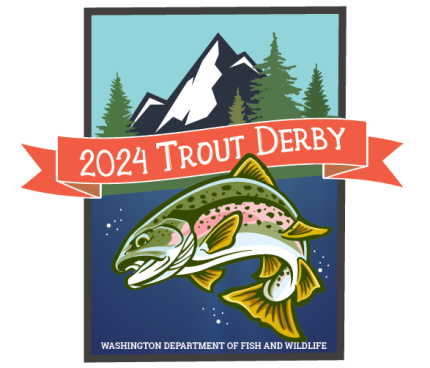
Annual statewide trout derby
The Department’s annual statewide trout derby is underway at more than 100 stocked lakes in Washington state. Over 100 participating businesses are offering more than 800 prizes valued at over $42,000.
Several lakes in southwest Washington are stocked with derby fish including:
- Battle Ground Lake, Klineline Pond, and Lacamas Lake in Clark County
- Carlisle Lake, Fort Borst Park Pond, Mineral Lake, and Lewis County Park Pond in Lewis County
- Horseshoe Lake, Kress Lake, and Lake Sacajewea in Cowlitz County
- Rowland Lake and Spearfish Lake in Klickitat County
- Icehouse Lake and Swift Power Canal in Skamania County
Anglers can check the WDFW webpage for each lake to see the remaining prizes left to be claimed. The derby is open to anyone with a valid 2024 fishing license. There is no entrance fee or registration required. Simply catch a tagged trout anytime through Oct. 31 and you win! Plus, youth under the age of 15 fish for free.
For more information about this year’s trout derby, please visit the trout derby webpage.
Steelhead plants in area lakes
Several southwest Washington lakes were stocked with steelhead earlier this year, with plans to plant more. In total, over 600 steelhead have been stocked in southwest region lakes including:
- Kress Lake and Horseshoe Lake in Cowlitz County
- Fort Borst Park Pond in Lewis County
Planted fish will have a yellow tag along their dorsal fin with a phone number for WDFW staff, who will track the program’s success. Anglers should note that tagged steelhead are not part of WDFW’s annual trout derby, so there is no prize for catching them.
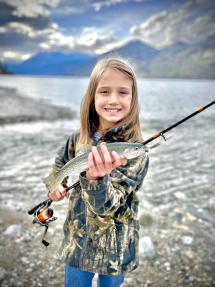
Trout fishing in rivers and streams
With waters still flowing cold but settling after spring runoff, July is peak season for many river and stream fisheries. Dozens of rivers and streams across Washington are open for gamefish, including trout, steelhead, char, and whitefish.
Many southwest Washington streams hold surprisingly large rainbow and cutthroat trout that can be caught using small spinners, spoons, jigs, or fly-fishing gear.
Anglers should be aware that the river or stream you’re fishing may be managed under catch and release or selective gear rules—which prohibit using bait, barbs, and treble hooks—to protect wild steelhead and salmon. Be sure to check the Fish Washington mobile app or online regulations for any emergency fishing rule changes before heading out.
Warmwater fish
Silver Lake in Cowlitz County is continuing to produce crappie, with yellow perch being encountered at many southwest region lakes including Lacamas Lake in Clark County. Rowland Lake in Klickitat County has been a good option for targeting bluegill and pumpkinseed. Smallmouth bass anglers have had success in Riffe Lake in Lewis County, with Kress Lake in Cowlitz County producing largemouth bass. Those in pursuit of tiger muskie are finding action at Mayfield Lake in Lewis County.
The walleye bite is active throughout the lower Columbia River, including throughout the Dalles Pool and above John Day Dam. Walleye anglers should note that designated areas of the Columbia River (below several dams) are closed to fishing with sturgeon spawning sanctuaries in effect.
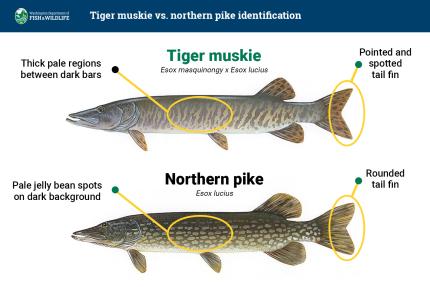
Tiger muskie and northern pike
Did you know tiger muskie are present in several Washington lakes? These sterile (or non-reproducing) fish closely resemble invasive northern pike, but contrary to their invasive and potentially devastating cousins, tiger muskie serve a great purpose!
For decades, WDFW has stocked lakes with tiger muskie, a hybrid cross between a northern pike and muskellunge, to control overabundant fish species such as northern pikeminnow and to improve fishing opportunity.
In Washington, tiger muskie can be encountered in many lakes, including Lake Merwin in Cowlitz and Clark counties, Mayfield and Anderson lakes in Lewis County, and Lake Tapps in Pierce County. When they reach a minimum of 50 inches, tiger muskie are legal to harvest in Washington, with a daily bag limit of one.
With angler activity increasing as the weather warms up, anglers are reminded to know the difference between tiger muskie and northern pike. Tiger muskie have dark spots (juvenile) or vertical stripes or bars on a light background while northern pike have light horizontal spots on a dark background.
More information about tiger muskie, including a full list of where you may encounter the species, can be found on the tiger muskie webpage. To learn more about northern pike and what you should do if you encounter and identify one, visit the northern pike webpage.
Bass week
Join us for Bass Week July 8-12 as WDFW celebrates bass anglers and all things bass fishing on our social media accounts. Bass Week also includes a Facebook Live Bass Week demonstration and Q&A session on July 11. Grab your gear, bring your questions, and get ready for this annual event!
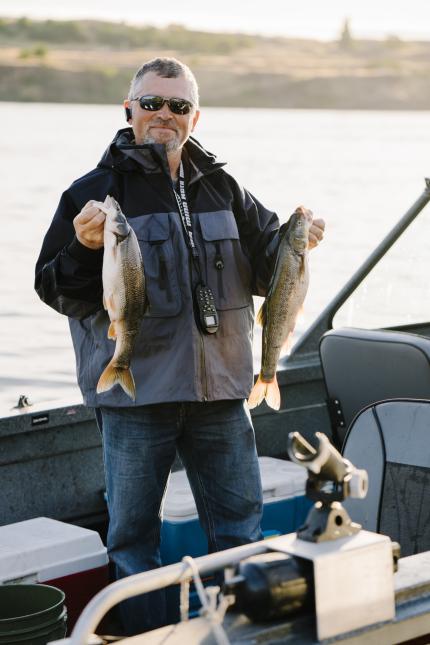
Get paid to fish
The 2024 Northern Pikeminnow Sport-Reward fishery, which pays anglers $6 to $10 for each qualifying fish, and up to $500 for a tagged fish, is open through Sept. 30. Funded by the Bonneville Power Administration, this program contributes to conservation by harvesting a portion of the largest pikeminnow preying on threatened salmon and steelhead populations in the Columbia and Snake River basins. In 2023, the top angler earned over $100,000—simply from fishing!
Visit pikeminnow.org for more information, including registration, rules, and regulations, then watch the webinar on YouTube to get started. To see weekly catch reports, visit the Pikeminnow Sport-Reward Fishery Program webpage.
The shad have arrived
Record shad returns over the past decade have turned the Columbia River into one of the most consistent and easily accessible sport fisheries in the region. In 2023, over four million American Shad migrated through the Columbia River system.
As of late June, over two million shad have crossed Bonneville Dam, with counts averaging at least 70,000 daily since mid-June. In recent weeks, anglers have lined the shores along several areas of the Columbia River with great success. For more information on American shad, their introduction into the Columbia River, and how to fish for them, please visit the American shad webpage or read our recent blog post.
Sturgeon spawning sanctuaries in effect
Through Aug. 31, sturgeon fishing will be closed in several designated areas of the Columbia River with spawning sanctuaries in effect. Areas closed to sturgeon fishing include below Bonneville, The Dalles, John Day, and McNary dams. A spawning sanctuary is needed as these areas are prime spawning habitat and handling sturgeon during this period could adversely impact their spawning success.
Sturgeon fishing in the Columbia River from Buoy 10 upstream to McNary Dam remains open for catch and release fishing non-sanctuary sections. Please check permanent and emergency rules before heading out.
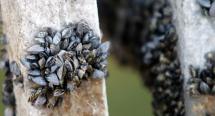
Boating season is here! Clean, drain, dry your boat
Help prevent the spread of aquatic invasive species this summer by having your boat checked every time you pass a watercraft check station and by cleaning, draining, and drying it every time you take it out of the water. Tips and more information available on our webpage.
Learn more about invasive freshwater mussel monitoring in Washington waters in our latest blog post.
Aquatic invasive species (AIS) are a huge threat to the state's native ecosystems, in particular, invasive mussels, recently found as close to Washington as the Snake River in Idaho, are a major concern but you can take some quick, easy steps to try to help prevent their spread. European green crabs are another AIS of concern in Western Washington.
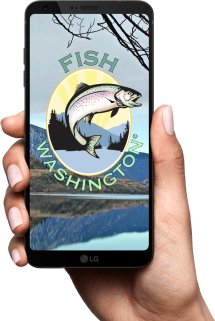
Fish Washington app receives major upgrades
WDFW launched an upgraded version of the Fish Washington mobile application on April 9, now available to download on both Apple iOS and Android devices. The new version is designed to run more smoothly while using less data and device memory.
Developers completely rewrote the app’s code, which now features a single code base for both iOS and Android platforms. This means a smaller app size, less frequent updates, and fewer bugs. Other improvements include:
- Location-enabled United States Geological Service (USGS) river gauges.
- More consistent emergency regulation delivery.
- Map upgrades.
The new version will show the full water body name and description on emergency regulation cards. With a data connection, the app also includes National Oceanic and Atmospheric Association (NOAA) tidal predictions for marine waters and portions of the Columbia River, as well as river gauges from multiple data providers. Users can ask questions, make suggestions, or report issues at MobileAppDev@dfw.wa.gov. Learn more in our news release.
Hunting tips and news
For an overview of hunting in Washington and how to get started, visit our Hunt Washington blog post.
Buy your 2024 hunting license
With summer in full swing, Washingtonians will need to buy 2024-2025 recreational hunting and fishing licenses. People can buy licenses from WDFW’s licensing website, WDFW regional offices, or hundreds of license vendors around the state.
Current hunting regulations are also available online at wdfw.wa.gov/hunting/regulations.
2023-25 hunting regulations
The 2023-24 Game Bird and Small Game Hunting Regulations and 2024-25 Big Game Hunting Regulations pamphlets are available online and at hundreds of license dealers around the state. The updated rules can help hunters make decisions about how to spend their time in the field.
Current hunting regulations are also available online at wdfw.wa.gov/hunting/regulations.
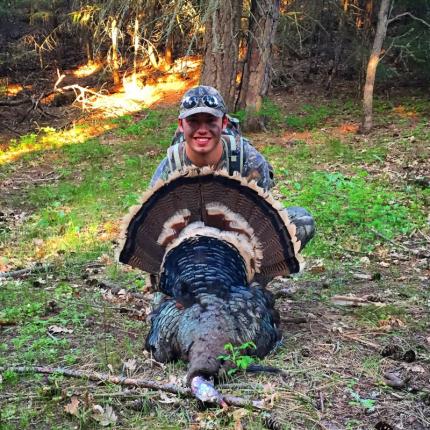
First Turkey Program
With the spring wild turkey hunting season wrapped up as of the end of May, now is the time to celebrate if this was your first turkey season. Send us your first turkey harvest information and receive an official WDFW First Turkey certificate. With the certificate, you can register your turkey with the National Wild Turkey Federation’s Washington state chapter to receive an official First Turkey pin.
Sign up for in-person hunter education
Hunter education is a mandatory program designed to promote knowledge and skills to continue our proud hunting tradition. WDFW offers two types of hunter education courses that teach firearms and outdoor safety, wildlife management, and hunter responsibility. All hunters born after Jan. 1, 1972 must show proof of hunter education course completion before purchasing their first Washington hunting license. For more information, visit the Hunter Education web page.
Morton office opens to the public
WDFW is pleased to announce that our office in the City of Morton is now open to the public. Office hours are Monday through Friday 8 a.m. to 12 p.m., excluding legal holidays. Previously, the office was only open by appointment. The office will be able to assist with fishing and hunting license sales, Discover Pass sales, local access information, and pelt sealing. Learn more in our news release.
Be aware of avian influenza (bird flu)
With the bird migration underway, there is a chance we could also see a resurgence in highly pathogenic avian influenza (HPAI or commonly known as bird flu) to the state. The H5N1 virus of avian influenza is making the rounds again, especially in areas of Western Washington. This is confirmed by WDFW testing of sick or dead wild birds and U.S. Department of Agriculture surveillance of hunter-harvested birds.
Hunters are encouraged to take precautions to protect themselves and their dogs from the virus. WDFW has specific precautions on our avian influenza webpage under “Human HPAI Safety.” If you encounter a sick or dead wild bird, please report it via our online reporting tool.
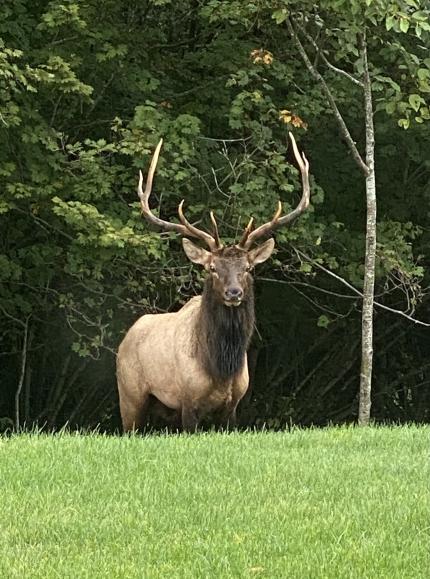
Hoof disease in elk
As many hunters know, Treponeme-Associated Hoof Disease (TAHD) has spread among elk in Western Washington in recent years. While elk are susceptible to many conditions that cause limping or hoof deformities, the prevalence and severity of this new affliction – now known as treponeme-associated hoof disease (TAHD) – suggests something different.
In 2021, WDFW implemented an incentive-based pilot program to encourage Western Washington (400, 500, 600 series GMUs) hunters to harvest limping elk, potentially reducing prevalence of the disease over time. General season or permit hunters can choose to participate in the program by submitting elk hooves at one of the many collection sites in western Washington.
See the WDFW website for the locations of collection sites. Hunters that submit hooves with signs of TAHD (for example, abnormal hooves) will be automatically entered into a drawing for a special incentive permit for the following license year. Multiple bull permits in western Washington with season dates of Sept. 1 – Dec. 31 will be awarded. Additionally, all participants will receive a custom, waterproof license holder.
What hunters can do to help:
- Harvest a limping elk from any 400, 500, 600 series GMUs.
- Turn in your elk hooves along with complete registration forms at one of several collection sites in western Washington.
- Report elk: Hunters can help WDFW track TAHD by reporting observations of both affected and unaffected elk on the department’s online reporting form.
- Clean shoes and tires: Anyone who hikes or drives off-road in a known affected area can help minimize the risk of spreading the disease to new areas by removing all mud from their shoes and tires before leaving the area.
Head to myWDFW.com for info on hunting, angling, and more
WDFW has rolled out a promotional website for all things hunting, angling, foraging, recreating, and more. At myWDFW.com, you’ll find informative how-to articles on the season’s major fishing and hunting opportunities, as well as a portal to online license sales and a regular update on WDFW’s latest Life Outdoors articles.
Each quarter, new fishing and hunting highlights are posted to help you get ready and take part in Washington’s current and upcoming opportunities. Dedicated to current agency promotions, outdoor recreation information, and educational content, myWDFW.com preps you to meet with success in the field and on the water.
Wildlife viewing and recreation
Searching for places to watch wildlife or recreate on State Wildlife Areas or WDFW Water Access Areas? Visit our Places to Go webpage, Wildlife Area map or Water Access Area webpage for ideas.
Or visit our wildlife viewing webpage for more information and tips on wildlife watching!
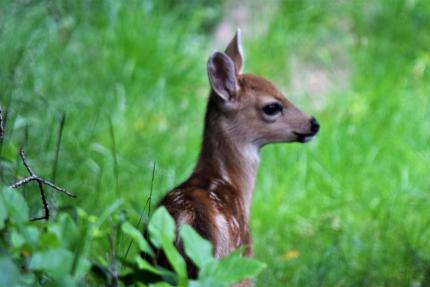
Leave wild babies wild
July is another busy month for the birth of baby animals. If you find fawns, baby birds, or other young animals, please leave them be, even if they appear to be orphaned or abandoned. Most animals have a parent foraging or hunting nearby. Read our blog to learn about when not to rescue wildlife and what to do if you encounter certain species.
For wildlife that do require care, WDFW relies on permitted rehabilitators. Rehabilitators are trained and highly skilled in providing the unique attention needed for injured or orphaned wildlife, and care deeply for the animals entrusted to them.
Visit our website to learn more about Washington’s wildlife rehabilitators and find one near you. Remember to thank the rehabilitators in your region for the important work they do on behalf of our state’s wildlife!
Watchable Wildlife
Whale watching is a popular pastime that can be done on land and sea. Orcas, humpback whales, gray whales, minke whales, and harbor porpoise (just to name a few) can all be spotted during this time of year. Search for a reputable and responsible boat operator through the Pacific Whale Watch Association, or explore the Whale Trail for best viewing locations on shore.
No coastline? No problem. There’s always wildlife to watch across the state! Check out a Wildlife Area near you to enjoy time outside and find birds, mammals, amphibians, and more. When viewing all wildlife, be sure to follow responsible and ethical viewing and photography practices to have a safe and enjoyable experience. More information on wildlife viewing- including how to get started- can be found on our webpage.
Feeding wildlife
Many well-meaning Washington residents in urban and suburban areas enjoy feeding deer in their yards. Although some people see this type of feeding as helping these animals, it can hurt them and potentially cause illness and death for the animal. Learn more about how to help us keep wildlife wild by following tips on our website (PDF).
Help protect wildlife by keeping dogs leashed
With summer arriving, now’s the time to get out and enjoy Washington’s great outdoors. Also during this time, does are giving birth to fawns, ground-nesting birds are tending to their eggs and young chicks, and sensitive plants are growing to provide food and habitat for wildlife.
If you have a canine companion, chances are they’re eager to join you outdoors, too. While dogs are welcome at WDFW wildlife areas and water access areas, please keep in mind that they must be leashed through July 31. Learn more about how this helps to protect habitat, wildlife, and people in our 2022 blog post.
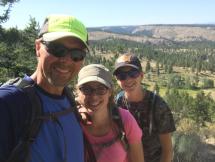
#LifeOutdoorsWA
The outdoors fits into everyone’s life in unique and personal ways. We want to help people connect with nature wherever they are. Check out our Life Outdoors resources to plan your next adventure, whether it be birding in your neighborhood or camping across the state. We hope to see you in the field and on the water enjoying the Life Outdoors!
WDFW offers accessible hunting and wildlife-viewing blinds
Did you know WDFW offers hunting and wildlife-viewing blinds and platforms throughout Washington that are accessible to people with disabilities? Learn about these Americans with Disabilities Act (ADA) designated sites at wdfw.wa.gov/accessibility/hunting-and-wildlife-viewing-blinds.
Some sites can be reserved through WDFW's Private Lands Hunting Access program. Others can be reserved by calling the wildlife area manager.
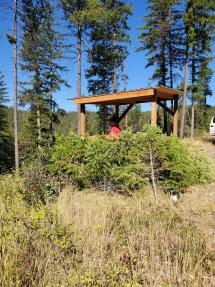
Hunters without disabilities should yield ADA hunting and wildlife-viewing blinds and platforms to those with disabilities if the site was reserved.
Many of these ADA hunting and wildlife-viewing blinds and platforms are built and maintained with support from volunteers, master hunters, and partners including Inland Northwest Wildlife Council and Washington Waterfowl Association. Thank you!
Practice bear awareness this summer
Black bears are common throughout Washington, including suburban areas. Both when preparing for hibernation and awakening from it, they look for high-calorie foods that are easy to obtain. These may include garbage, bird feeders (both seed and liquid), fruit trees, and pet food.
As human populations encroach on bear habitat, people and bears have greater chances of encountering each other. Food sources provided by humans, whether intentionally or not, can attract bears. Removing these attractants is the best way to encourage bears to move along and focus on natural food sources.
Ask your local waste management company if bear-resistant containers are available or if individually purchased bear-resistant containers are compatible with the company’s equipment. Secure your garbage cans, such as in a shed or garage, and put them out the morning of pickup — not the night before. To help reduce odors, freeze meat and fish waste before disposing of it and spray garbage cans with disinfectants.
More information on living with bears is available on our website and our blog.
Conserving species and habitats
Looking for more info on wildlife conservation and species management around Washington? Check out our Bi-Weekly Wildlife Program reports.
Check out our May/June 2024 Director's Bulletin for more conservation highlights!
Wild Washington Youth Education program
For a fun and educational family activity, explore Washington's endangered species together. Start by researching local species such as the pygmy rabbit or the Pacific lamprey, using resources from WDFW. Plan a visit to local habitats where these species live, like wildlife areas or parks. Engage children by creating habitat models using cardboard, paint, and natural materials. Encourage discussions on conservation efforts and ways to protect these species. This hands-on approach not only educates but also fosters a deeper appreciation for local wildlife and conservation efforts.
Support wildlife at home
Summer is officially here! Summer in Washington means that the small pools of water wildlife rely on are drying up. Help wildlife stay hydrated by adding a bird bath and pollinator puddle to your Habitat at Home. Placing water features in the shade will keep the water cool and prevent it from drying up quickly. Change water daily to dissuade mosquitoes.
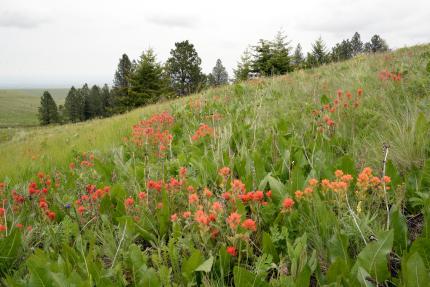
Wildflower viewing
Early summer is usually a really good time for wildflower viewing throughout Washington and especially along mountains and hillsides, although some blooms are a bit behind because of the recent cold, wintry-like weather. Given that fact, this month still holds a lot of promise for viewing and photographing a bright pop of wildflowers along most low elevation areas are typically pretty good. As wildflowers come into full bloom that means butterflies and bees are enjoying them too. June and July are the best months to see the greatest variety of butterflies.
Look out for invasive European green crabs
Summer fun is just around the corner. While you enjoy your favorite outdoor activities around Washington's waters, be on the lookout for European green crabs.
Use our simple "5 Point" approach to identify this aquatic invasive species:
- 5 points outside of the eyes
- 4 inches or smaller
- 3 rostral bumps between the eyes
- 2 semi-flattened rear swimming legs
- 1 enormous threat to our native shellfish and aquatic habitat
Join us in the fight against this invasive species. If you spot a European green crab using these 5 points, report it at wdfw.wa.gov/greencrab.
Join the WDFW team
If you’d enjoy preserving, protecting, and perpetuating the state’s fish, wildlife, and ecosystems while providing sustainable fish and wildlife recreational and commercial opportunities, then check out some of our current job openings or sign up for job alerts. From fishery technicians and environmental planners to data scientists, archaeologists to wildlife biologists, a career with WDFW makes a difference.
Volunteer opportunity spotlight
WDFW welcomes volunteers of all abilities who want to contribute to the conservation of fish, wildlife, and habitat. Diverse volunteer opportunities are available, including projects on state wildlife areas and water access areas, habitat restoration projects, Hunter Education instruction, and assisting at outreach events.
For more information about the volunteer program and upcoming volunteer opportunities, visit the WDFW volunteer webpage.
Meet your Regional Director: Rian Sallee

Rian Sallee has worked in the non-profit, private and government sectors on environmental protection and conservation, specializing in water quality policy. She joined WDFW in 2022 from the Washington State Department of Ecology where she led the Vancouver Field Office with a focus on environmental justice and diversity, equity, and inclusion.
Rian is honored to serve WDFW as Region 5 Director. She looks forward to co-creating a culture of belonging at the agency informed by our shared values and the legacy of the exceptional work and dedication of our employees. She is motivated to collaborate internally between regions and across programs, and externally to support our partnerships. Rian enjoys working at the intersection of people, science and policy and is excited to connect with and learn from our employees throughout the state as they work to conserve Washington’s fish, wildlife and the habitats that support them.
Rian serves as Vice-Chair of the Board of the Lower Columbia Estuary Partnership. She is from the Midwest and spent years living and working on Lake Erie which instilled in her a passion for and commitment to natural resource conservation and environmental protection. She holds a Master of Environmental Science degree from Miami University in Ohio.

